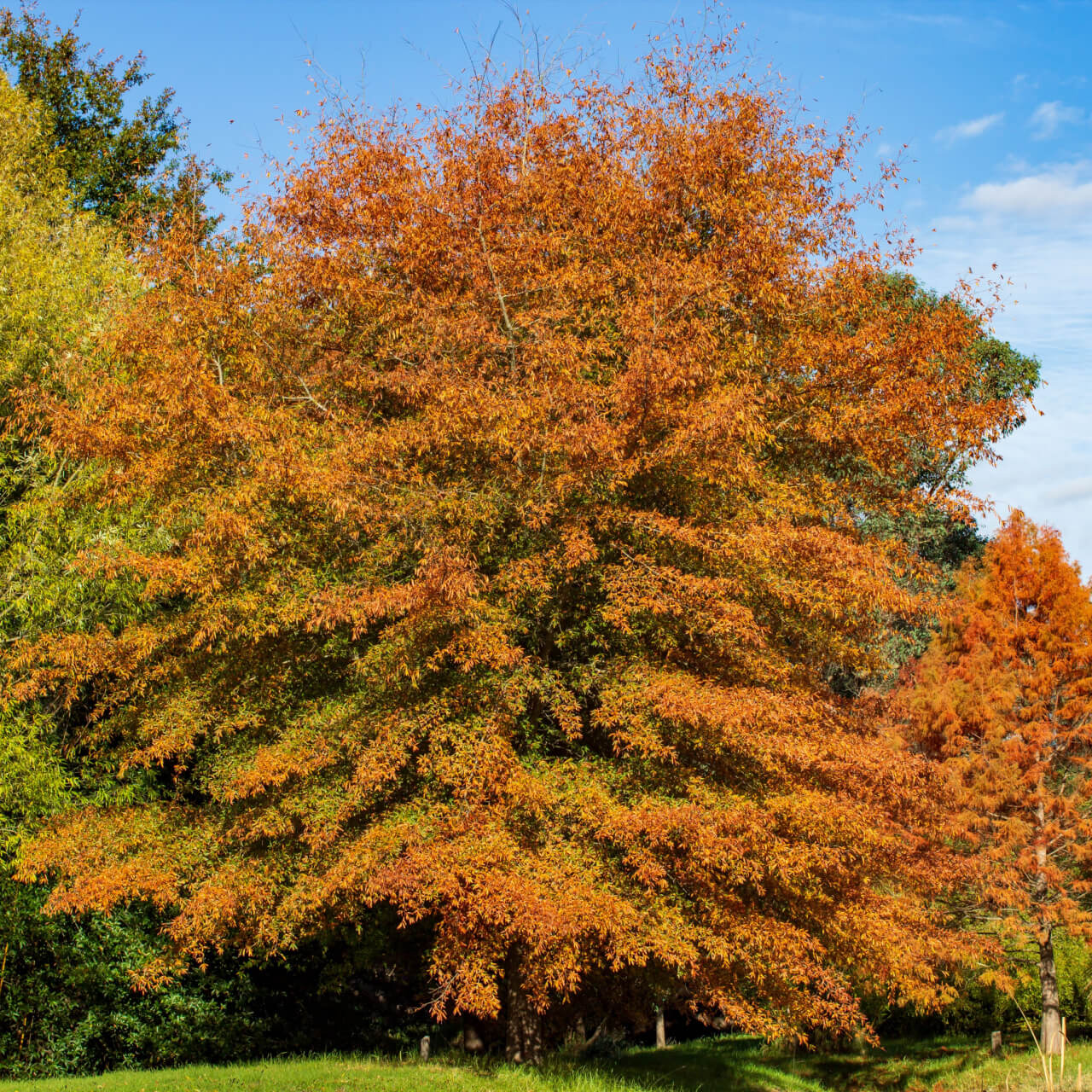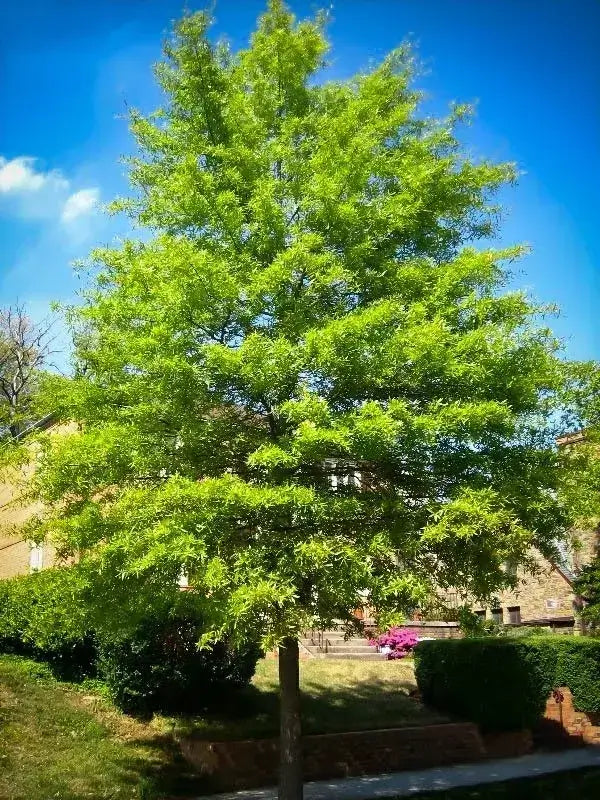Willow Oak Trees For Sale
Willow Oak Tree (Quercus phellos) is a deciduous tree with long, shiny, and slender willow-like leaves. It will create great aesthetic appeal on your property and provide great value to local wildlife. This tree is native to the southeastern United States. Its shiny green leaves will turn shades of yellow and deep orange with the fall color change, creating a beautiful autumn display.
Plant Details - Willow Oak Tree (Quercus Phellos)
Family: Fagaceae
Light Requirement: Full Sun
Water Needs: Moist
Height: 40 – 75 ft.
Spread: 25 – 50 ft.
Growth Rate: Fast
Bloom Time: Spring
Flower Color: Yellow
Wildlife Value: Attracts birds
Landscape Uses and Maintenance - Willow Oak Tree
Willow Oak Tree as an ornamental focal point in your yard or use it to create a shade garden. It is excellent when planted as a landscape tree for shade. It will produce plenty of acorns that will fall to the ground below. These acorns will provide food for squirrels, small mammals, turkeys, and other birds.
With its expansive canopy and branching, this tree will provide valuable shelter for birds. Nesting birds use its branches and twigs, while cavity-dwelling birds use its cavities.
Noteworthy Characteristics of Willow Oak Tree
Plant their favorites, and they will come! The Willow Oak Tree is a host plant for many butterflies, including the Banded Hairstreak and Horace’s Duskywing. This tree is ideal for erosion control and increasing soil stability.
Exposure
Willow Oak trees flourish in full sun to partial shade, requiring a minimum of 6 hours of natural sunlight daily for optimal growth. They are adaptable to different light conditions but perform best in bright, sunny locations for vigorous development.
Height at Maturity
Over 25 Feet
Usage
Shade
Shipped As
Bare-root
Ships
UPS
Planting Zones
5-9




